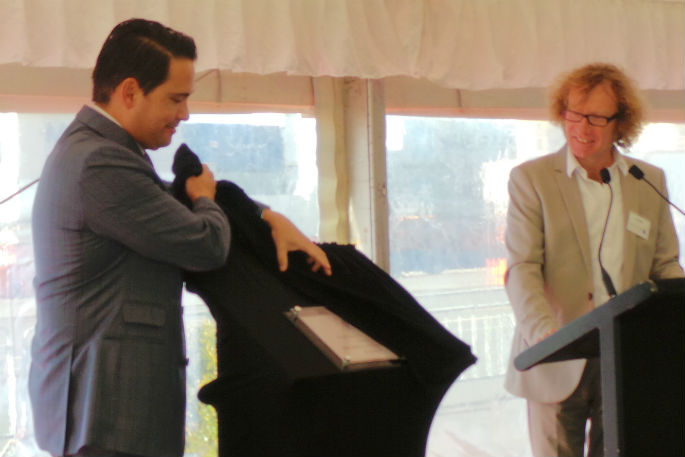The Port of Tauranga's successful establishment as the only New Zealand port call for Maersk and Hamburg Sud's big ship services is going to change New Zealand's ports, says board chariman David Pilkington today.
Speaking at an on-wharf celebration today of the port's handling one million twenty foot equivalent containers in one year, David says that not only is the milestone a direct reflection of a huge amount of work over a considerable period, but that the result will change the country's historic approach to ports.
'The introduction of a hierarchy of fewer hub ports and second tier feeder ports, supported by more coastal shipping, is unquestionably the way of the future,” says David.
'The sums of capital required and the aggregation of sufficient cargo and supporting transport infrastructure is clearly not something port owners can afford to replicate in 13 regional container ports across the country.”
But there are signs this has not been fully grasped, he says. Ports are generally local government owned and viewed emotionally as being essential to regional development
'We continue to see plans to pour ratepayers' capital into ports that has little chance of returning the cost of that capital,” says David.
'While the Ports Act specifically references the need to manage port facilities to achieve a return over and above the cost of capital, emotional and parochial behaviour threatens to prevent good strategic long term planning around regional infrastructure to support efficient feeder services.”
He gave as example Centreport Wellington which he says is considering a multi-million dredging programme to attract bigger ships, even though it does not have the land available to aggregate sufficient containers to make a big ship port call worthwhile.
'When I challenged the people involved, they said; ‘Well if we don't dredge they can't come. If we dredge, they might come'.
'That's the basis on which some of these councils are making decisions to upgrade the facilities. It's a hard sell because it's such an emotional thing.”
Tauranga moves most of the extra containers by rail. Train numbers between Auckland and Tauranga have increased from 54 a day to 78 a day - taking about 450,0000 truck-loads. Off the roads.
Auckland by comparison shifts less than five percent of its cargo by rail.
'You would think with all the congestion problems in Auckland, something should be addressed,” says David.
Councils seeking to replicate blue water port facilities should focus on investing in where they can make efficiencies, says David.
For the Board, Management and every member of staff of the Port of Tauranga, the milestone being celebrated is a direct reflection of a huge amount of work over a considerable period, says David.
Preparing the port to be able to handle the container volume began ten years ago, extending over $350 million, dredging the port, extending the wharf and buying new tugs, new cranes, and straddle carriers.
'This was a major undertaking, the magnitude of which gave the Board and Management more than a few sleepless nights.
'We know that our shareholders would not thank us for taking a simplistic 'build it and they will come” approach.
'We needed to ensure that we not only had the facilities and equipment, but we also had to have sufficient confidence in being able to put together a compelling rationale for our key shippers to enter into long term commitments, and for shipping companies such as Maersk and Hamburg Sud to have the confidence to introduce their single-port large-ship services.”
He says the port is far from reaching capacity.



0 comments
Leave a Comment
You must be logged in to make a comment.